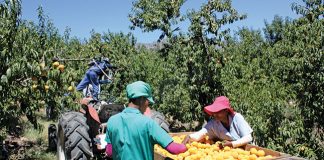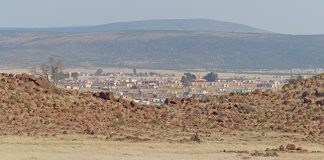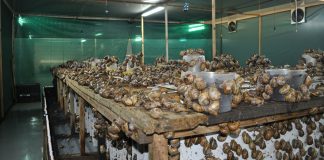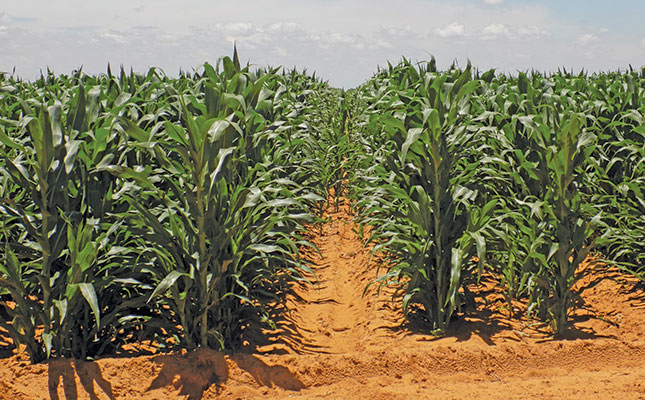
Photo: Annelie Coleman
Three armyworm species occur in South Africa: the fall armyworm (Spodoptera frugiperda), the African armyworm (S. exempta), and the lesser armyworm (S. exigua).
These insects’ life cycles, behaviour and ecologies differ, and they feed on different crops, says Dr Annemie Erasmus, a senior researcher of entomology at the Agricultural Research Council’s (ARC) Grain Crops Institute.
The lesser armyworm, for example, survives on broad-leaved plants, while the African armyworm feeds on grass species such as maize.
“It is essential for crop producers to familiarise themselves with the different species of armyworm to ensure correct classification and effective control should an outbreak occur,” says Erasmus.
Fall armyworm
Fall armyworm (FAW) larvae were first collected in South Africa in 2017, mainly on maize lands. The pest can cause great devastation to a number of different crops.
Its life cycle varies between 24 and 30 days, depending on prevailing temperature and humidity, and the number of generations that appears in an area is determined by the number of dispersing moths.
FAW does not have a diapause (overwintering) stage. The moths lay eggs, which are dome-shaped, have a flat base and Speciescurve upwards to a broadly round point, in batches on foliage. Up to 200 eggs in a batch have been recorded, and a moth can lay more than 1 000 eggs in her lifespan.
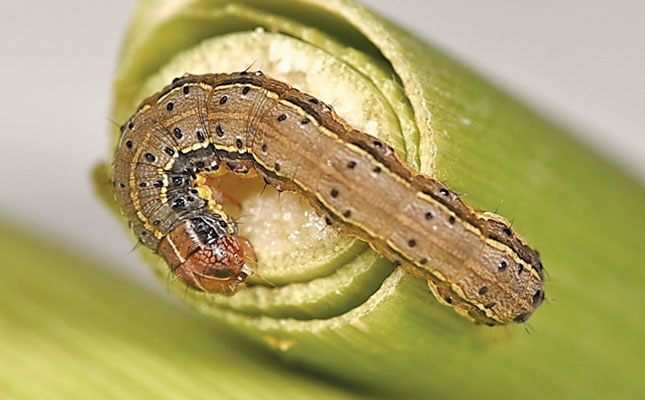
The female deposits a layer of furry-looking, greyish scales over the egg batch. The egg stage lasts two to three days.
Newly hatched larvae are green, but their colour changes as they mature. The smooth-skinned larvae range from light tan or green to nearly black, with three yellow-white lines running down the back. On each side of the body are yellow lines and a wider dark stripe.
“FAW can be differentiated from other species by a predominant white, inverted Y- shape on the forehead between the eyes,” says Erasmus.
The duration of the larval stage can be as short as 14 days in summer. FAW larvae feed throughout the day and night.
Pupation normally occurs in the soil, with the larva constructing a cocoon out of soil particles, with silk to pupate in. But it can also web together leaf debris if the soil is too hard. The duration of the pupal stage is eight to 10 days in summer.
The mainly nocturnal moths have a wingspan of between 32mm and 40mm, and are strong flyers.
“The forewings of the male moth are shades of grey and brown, with triangular white spots at the tip and near the centre of the wing. The female forewings are less distinctly marked. The hind wings are silvery white in both sexes. The duration of the adult stage is about 10 days,” she says.
African armyworm
The African armyworm is distributed widely in sub-Saharan Africa, and is a serious pest in countries north of South Africa.
African armyworm outbreaks are known for their unexpected sudden appearance, and this has led to the common name ‘mystery worm’. The name ‘armyworm’ describes the way the larvae march in large numbers away from sites where their food has run out.
“In Afrikaans, the African armyworm is called kommandowurm [commando worm] because the large numbers of larvae advancing are reminiscent of a commando of soldiers on manoeuvre,” says Erasmus.
Often, large areas of lawn, pasture or grass crops, such as maize and sorghum, are covered in dense colonies of larvae.
This can happen virtually overnight. Small outbreaks occur frequently in the high-rainfall areas of Mpumalanga and KwaZulu-Natal, but a large outbreak occurs only once every six to 10 years. The worst outbreaks in South Africa occur after late summer rain following drought.
Large numbers of birds congregating on the veld is usually a good indication of the presence of African armyworm, says Erasmus. The moths, which can be identified by their brown forewings, whitish hind wings and dark-brown patterns on the forewings, are capable of migrating thousands of kilometres, especially during outbreaks.
Their main migration flights start in the evening, and the insects ascend to 300m to 1 000m above ground level, moving downwind on the prevailing air currents.
In most parts of South Africa, infestations are usually due to moths migrating from warmer countries to the north, such as Zambia, Zimbabwe and Mozambique.
The female moth lays her eggs in batches of between 100 and 400, and can produce up to 1 000 eggs in her lifetime. These hatch within three to six days, depending on air temperature and humidity.
The larvae grow to 25mm in length, are blackish with green/yellow lines running the length of the body, and have a characteristic V-shaped mark on the front of the head capsule. Fully grown larvae pupate in the soil.
To ensure effective control, a farmer must detect the larvae early.
“If they’re discovered when fully grown, using insecticides is generally not recommended, as most of the crop damage will already have taken place, and the likelihood that a second generation will emerge is small. Where larvae move from one land to another, a furrow can be ploughed to create a pitfall where the larvae can be trapped, ploughed under, or controlled with insecticides.”
Fall armyworm vs African armyworm
Although closely related, FAW and the African armyworm have different behaviours and ecologies, says Erasmus. FAW rarely displays the armyworm behaviour of larvae massing and ‘marching’ across lands.
African armyworm, because it is indigenous to the continent, faces many natural biological enemies, including predators, parasitoids (insects whose larvae develop within the bodies of other arthropods, eventually killing them), and diseases. In contrast, FAW is likely to have arrived in Africa unaccompanied by its natural enemies, which enabled populations to increase unchecked.
However, researchers have found one local parasitoid that attacks the larvae. But Erasmus cautions that this by itself is not enough to control FAW.
“There’s no single control measure to manage FAW effectively. Despite the good news about the egg parasitoid, an integrated management programme is essential to contain any invasion by pests such as FAW,” she says.
Lesser armyworm
The lesser armyworm is a highly dispersive, polyphagous (feeds on various types of food) species that is a pest of vegetable, field and flower crops. Susceptible crops include cabbage, tomato and cotton. Native to South East Asia, it is now also found in Africa, Australia and North America.
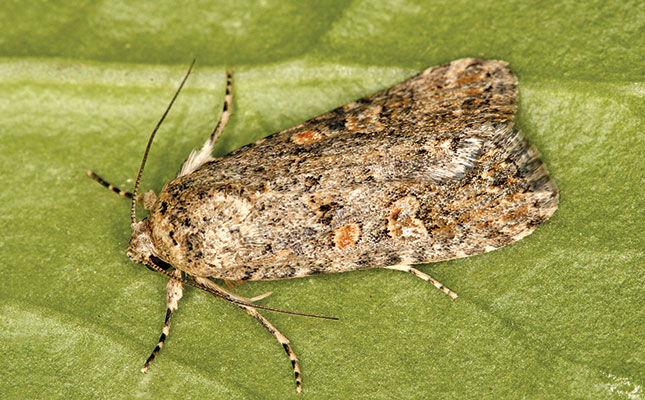
The lesser armyworm lacks a diapause mechanism and can only overwinter successfully in warm regions or greenhouses. The larvae feed on foliage and fruit, and often do so in large swarms, causing crop losses.
“This species seldom reaches pest status in maize, and there are no cultural control measures,” explains Erasmus. “We’re not sure if the larvae ever get to the stage where they move en masse, like the African armyworm. As they mature, the larvae become solitary.”
The moth of the lesser armyworm is pale grey, with brown forewing markings. The hindwings are white, with dark veins. The female lays up to 600 eggs in clusters of 30 to 100. The larvae become pupae in pupal cases in the soil, and moths appear 10 to 12 days later.
Erasmus urges farmers to contact the ARC if they see any armyworm, providing clear photographs for identification.
Email Dr Annemie Erasmus at [email protected].









